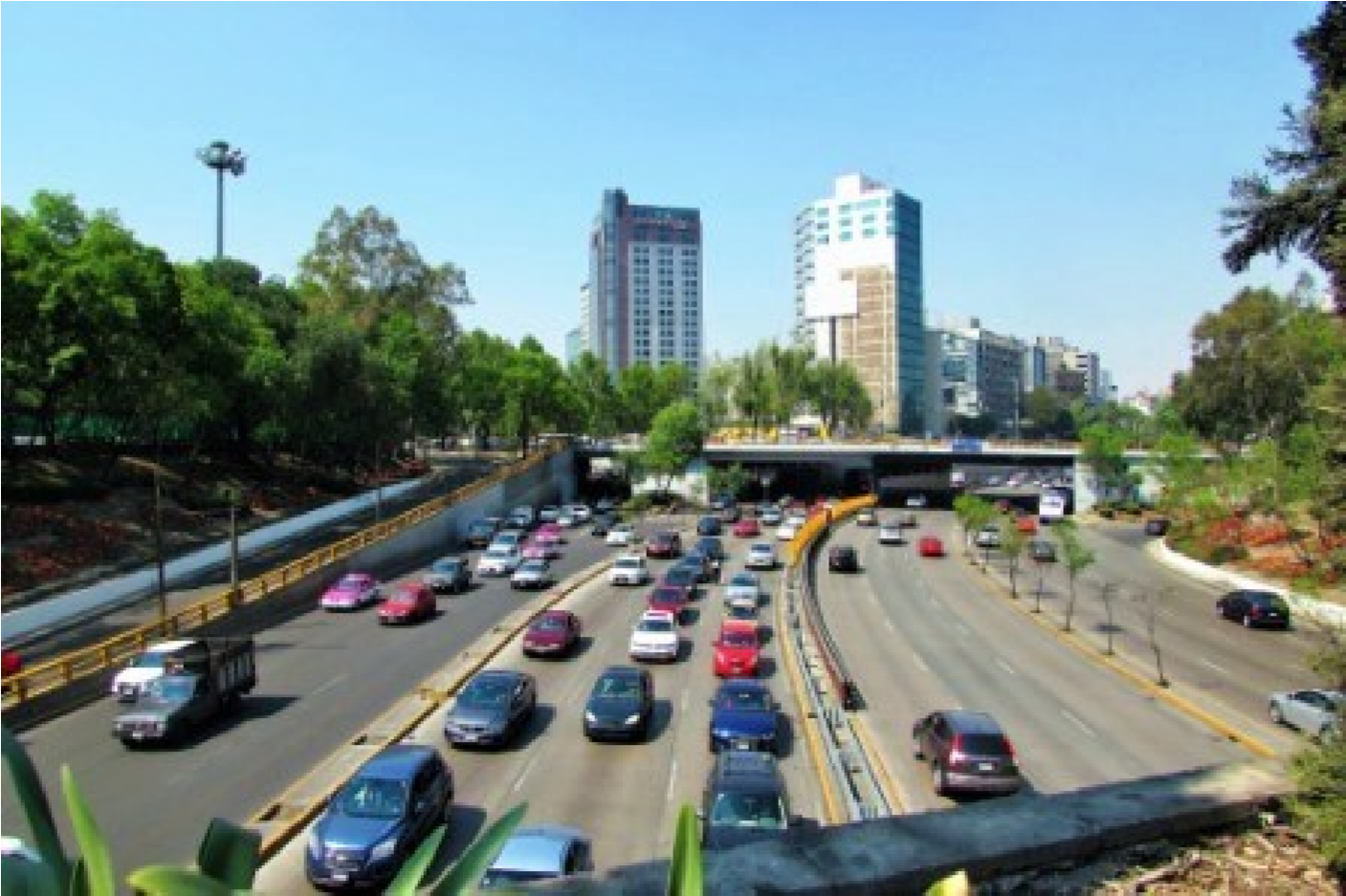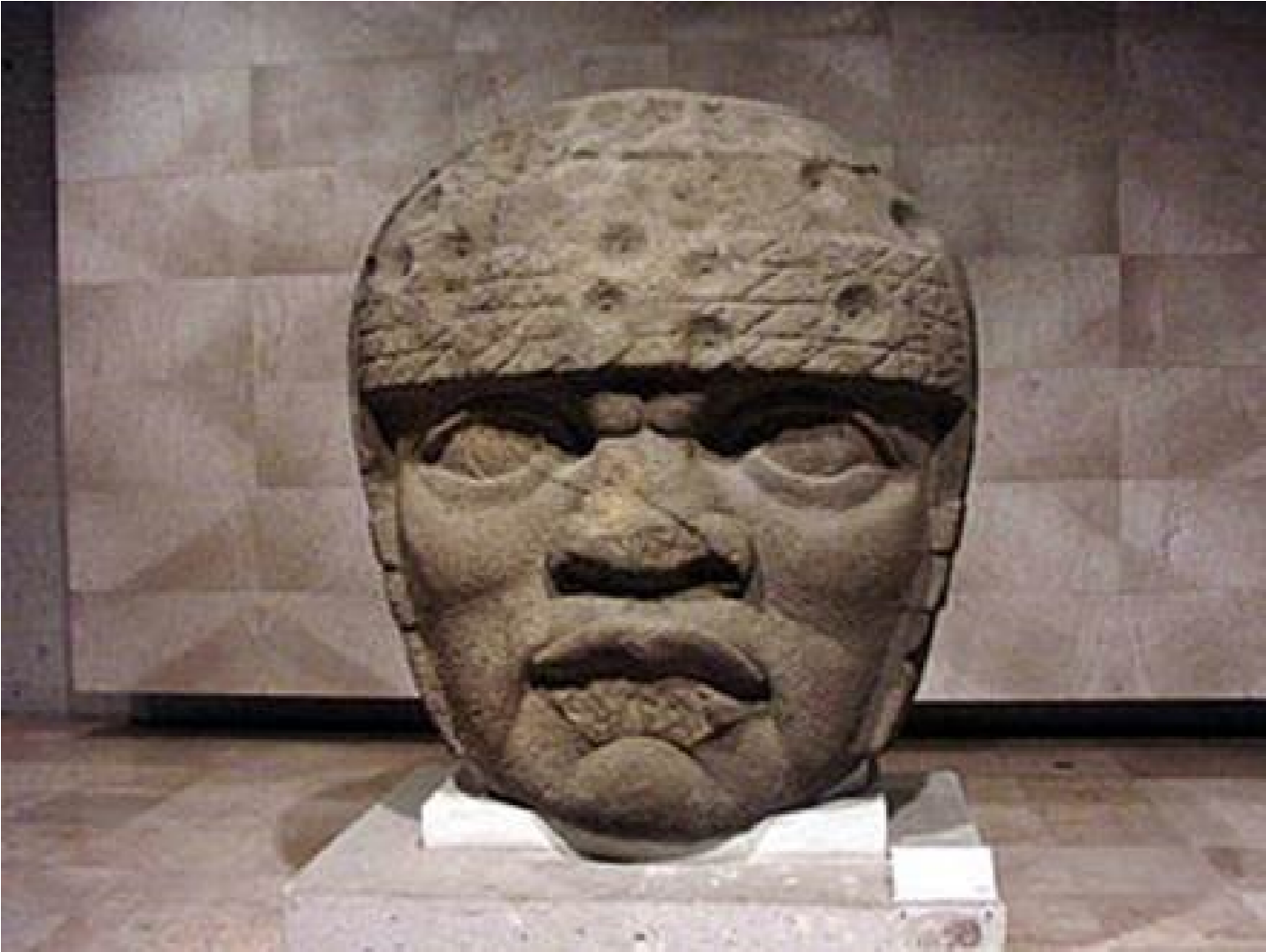By Dan and Lisa Goy from the November 2018 Edition
When we arrived in town, it became apparent that some road diversions were in place and our entry into the RV Park was not park we stayed in December 2002 with our children, Kirsty, Ken
We returned to Mexico City (our 3rd visit in 31 years) from Puebla, on Hwy 150D, a drive of 246 km (152 miles). Lisa and I were leading but that changed after a couple of wrong turns, when Mike and Kelly took the lead for the final 30 miles (50 km) or so. As the driving day progressed, it became very windy, to the point where Roland and Janice had to pull off and secure their awning. As we would find out later, the upside was clear blue skies in Mexico City to start our stay, a rarity in this normally polluted metropolis of 30 million people. Our destination was the Teotihuacán RV Park in San Juan Teotihuacán. This is the same park we stayed in December 2002 with our children, Kirsty, Ken and Heather.
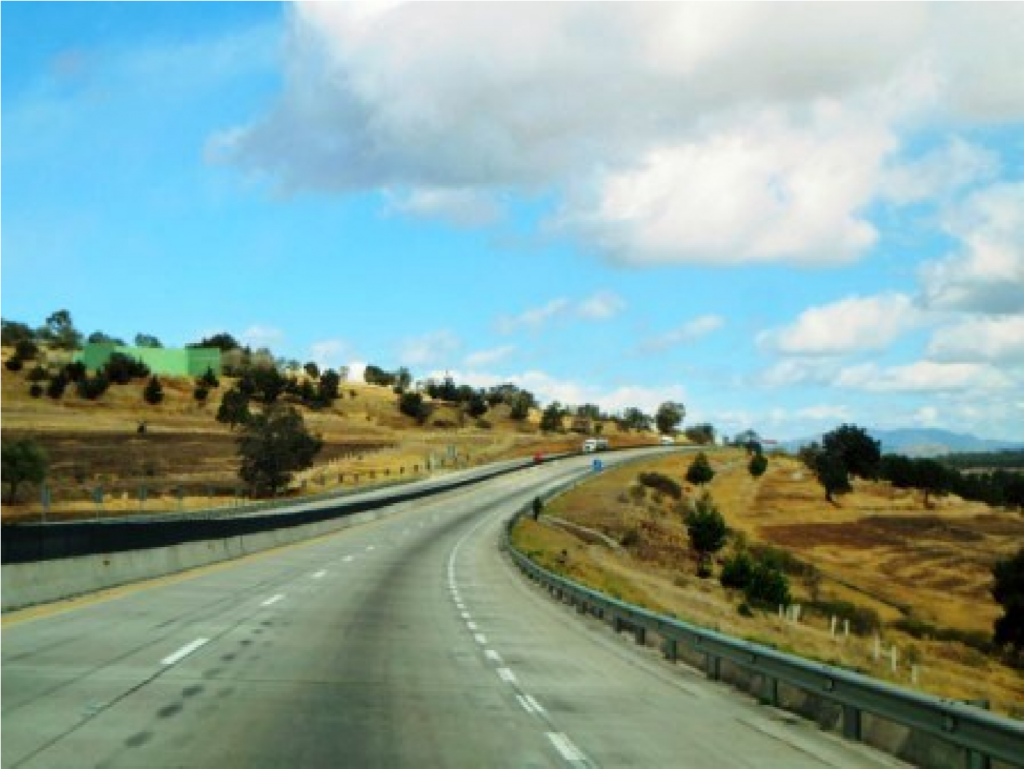
Entrance gate to San Juan Teotihuacán
campers
watch a new arrival park is an age-old practice. In our case, we had two guys
(a Brit and Frenchman) getting in the
going to be straightforward. Before you could say Mexican standoff, we had traffic jammed up, lots of horn honking, a policeman quickly became involved with multiple people giving directions; oh good. Fortunately, after 30 minutes or so, cooler heads prevailed (not necessarily mine), and we got it sorted out. The park was tight, much smaller than we had remembered.
The park was nearly full, all Europeans, although almost half of the RVs were in storage. We were the last RV to park, since it was more akin to assembling a jigsaw puzzle. Having other The next day, on Friday, we decided to take transit to the metro and leave the Baja Amigos Colectivo at the campground. Wise decision. It was 38 pesos for the bus, and a 3 block walk from the RV Park and 5 pesos for the subway, anywhere you wanted to go. This took us about 2 hours, leaving the campground at 9am and arriving at the Zocalo about 11 am. The gang split up and went many directions, agreeing to meet at 2:30 pm. Lisa and I had seen most of the sites immediately around the Zócalo, so we headed further into town. As I had said earlier, it was a fantastic day, with clear blue skies because of the big wind…a perfect day for photos in Mexico City.
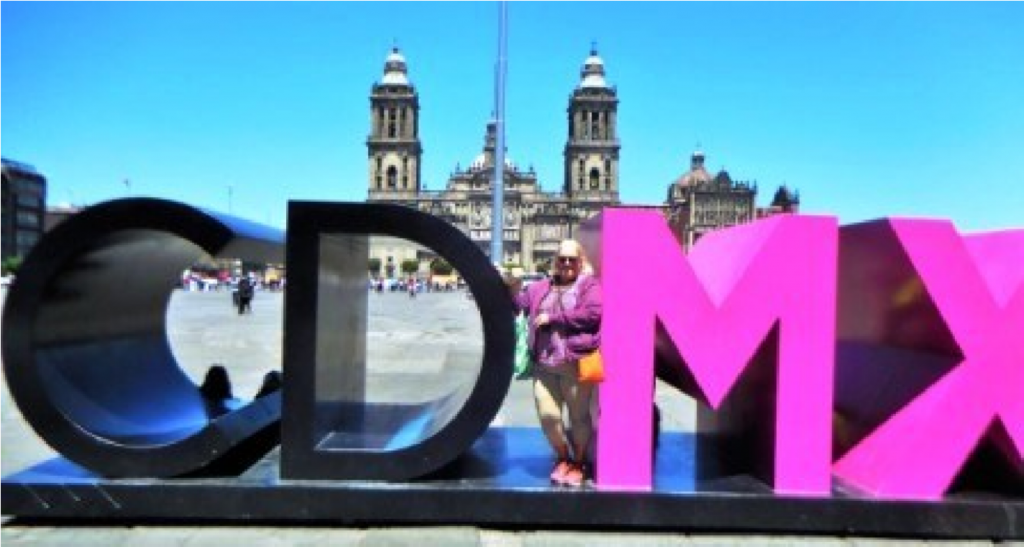
Estella Dan and Lisa
Day 3, Saturday, we left 30 minutes earlier and had arranged to meet Estella, Antonio Resendiz’s niece at the Zócalo. Estella had stayed with us 2 years before while taking English in Vancouver. We stayed with Estella’s Grandparents (antonio and Estella Resendiz) at Christmas, in 1985, on our 1st Mexican adventure. We still see Antonio and Bety (Estella’s uncle and aunt) on a regular basis in Bahia de Los Angeles on Baja. Estella brought Manuel, her cousin (another Antonio nephew), and we introduced them to the gang, then we all went and purchased tickets for the Turibus. The four of us dropped off at the Anthropology Museum, well worth a look for sure, and then made our way to Chapultepec Park and Castle, an iconic public park for Mexicans that includes deep historical roots to the MexicanAmerican War.
After our visit to Chapultepec, we met Estella’s Sister, Gabriela and Manuel Sr. (Antonio’s brother and Manuel’s dad) for lunch. We have not seen Manuel Sr. in over 30 years. We had lunch at a very beautiful, upscale, authentic Mexican restaurant not too far away from the Chapultepec (20-minute Uber ride). It was a wonderful meal, hosted by Manuel Sr. Clearly Manuel did not know who we were and seemed surprised that we were the
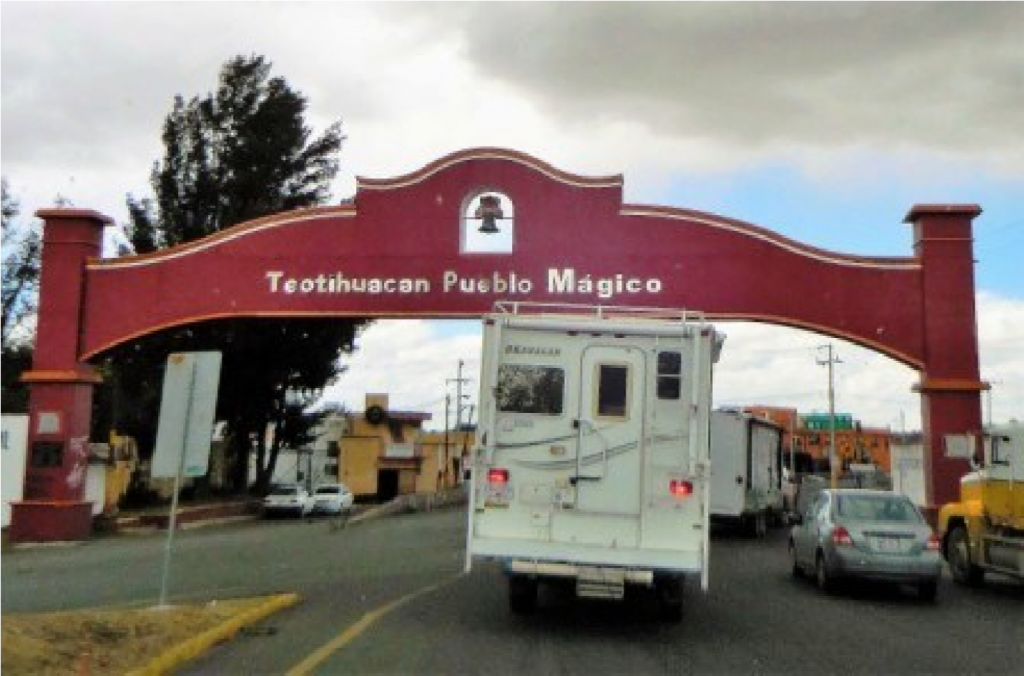
in 1985. Afterwards, we said our goodbyes and took an Uber back to the RV Park which took less than an hour and cost about $40 USD.
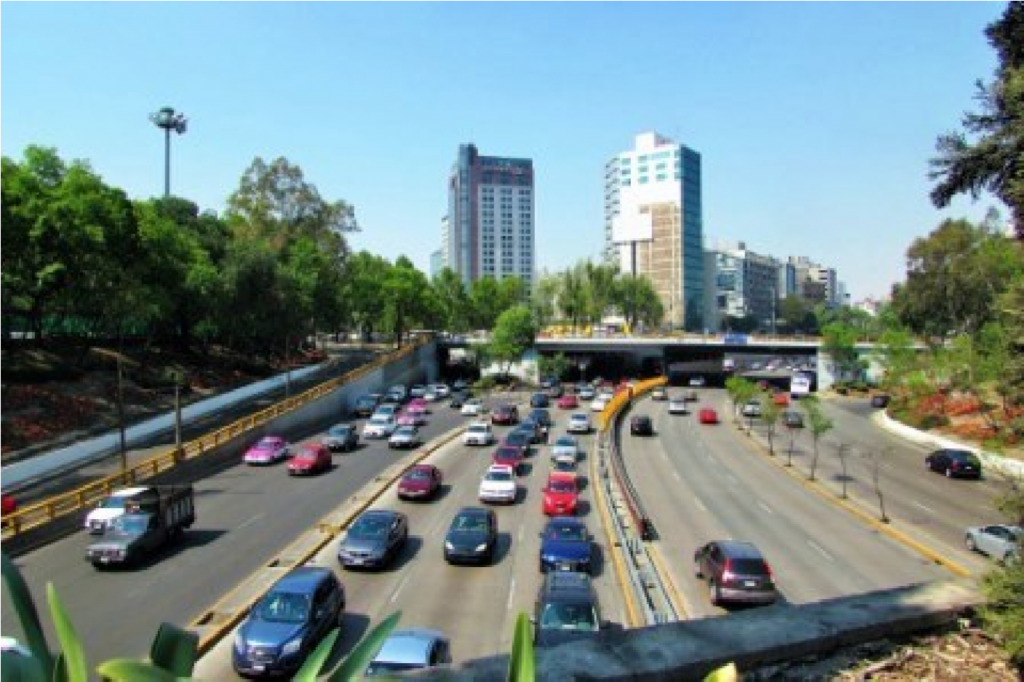
Coyoacán Freeway
The next day (Day 4), we did same trip into town with the gang, the bus and the metro, and this time we took the subway to Coyoacán to meet Estella again. This time, we also met Estella Sr. (Estella’s mom and Antonio’s sister). We had a lovely drive around parts of Coyoacán, drove by where we stayed in 1985, the Zócalo and church where we visited. We went in the church and went into the crypt where the remains of Antonio Sr. and Estella Sr. were interred.
The visit was moving for both of us. We also went to the local mercado and art exhibition. Later, we headed back to Estella’s condo where she resides with her parents. Rodolfo returned later, and we had a good chat as they hosted dinner; very tasty and hospitable indeed. We said our goodbyes and jumped in an Uber once again, back to the RV Park, in about 1.5 hours.
Mexico City suburbs
We really enjoyed our time in Mexico City and loved reconnecting with old friends and meeting new ones. We look forward to our return and a much longer stay. Sadly, we learned a few days later, that our dear friend Antonio Resendiz from Baja Sur, died suddenly from a massive heart attack in Bahia de Los Angeles. He will be missed by many.
Mexico City, District Federal
Mexico City is the federal district (distrito federal), capital of Mexico and seat of the federal powers of the union. It is a federal entity within Mexico which is not part of any one of the 31 Mexican states but belongs to the federation as a whole (not unlike Washington, DC). Mexico City is the country’s largest city as well as its most important political, cultural, educational and financial center. As an “alpha” global city, Mexico City is one of the most important financial centers in the Americas. It is located in the Valley of Mexico (Valle de México), a large valley in the high plateaus at the center of Mexico, at an altitude of 2,240 metres (7,350 ft). The city consists of sixteen boroughs.
The 2009 estimated official population for the city proper was around 8.84 million people, with a land area of 1,485 square kilometres (573 sq mi). According to the most recent definition agreed upon by the federal and state governments, the Greater Mexico City population is 21.2 million people, making it the largest metropolitan area in the western hemisphere, and the largest Spanish-speaking city in the world.
The gang in the Metro Mexico’s capital is both the oldest capital city in the Americas and one of two founded by Amerindians (Native Americans), the other being Quito. The city was originally built on an island of Lake Texcoco by the Aztecs in 1325 as Tenochtitlán, which was almost completely destroyed in the 1521 siege of Tenochtitlán, and subsequently redesigned and rebuilt in accordance with the Spanish urban standards. In 1524, the municipality of Mexico City was established, known as México-Tenochtitlán, and as of 1585, it was officially known as Ciudad de México (Mexico City). Mexico City served as the political, administrative and financial center of a major part of the Spanish colonial empire. After independence from Spain was achieved, the Federal District was created in 1824.
History
Aztec Period – Tenochtitlán
The city currently known as Mexico City was created by the Mexica people, later known as the Aztecs, in 1325. The old Mexica city, that is now referred to as Tenochtitlán, was built on an island in the center of the inland lake system of the Valley of Mexico, which it shared with a smaller city-state called Tlatelolco. It is sometimes seen in the scholarly literature written as “Tenochtitlán-Tlatelolco”. The great Aztec market that conqueror Bernal Díaz del Castillo describes in detailed wonderment in his chronicle “The True History of the Conquest of Mexico” is, in fact, describing the market located in Tlatelolco. The Mexica were one of the last of the Nahuatl-speaking peoples that migrated to this part of the Valley of Mexico after the fall of the Toltec Empire. Their presence was resisted by the peoples who were already in the valley, but the Mexica were able to establish a city on a small island on the western side of Lake Texcoco.
The Mexica themselves had a story about how their city was founded, after being led to the island by their principal god, Huitzilopochtli. According to the story, the god indicated the site where they were to build their home with a sign – an eagle perched on a nopal cactus with a snake in its beak. Between 1325 and 1521, Tenochtitlán grew in size and strength, eventually dominating the other city-states around Lake Texcoco and in the Valley of Mexico. When the Spaniards arrived, the Aztec Empire reached much of Mesoamerica, touching both the Gulf of Mexico and the Pacific Ocean.
The full edition or view it online
Dan and Lisa Goy, owners of Baja Amigos RV Caravan Tours, have been making Mexico their second home for more than 30 years and love to introduce Mexico to newcomers.
